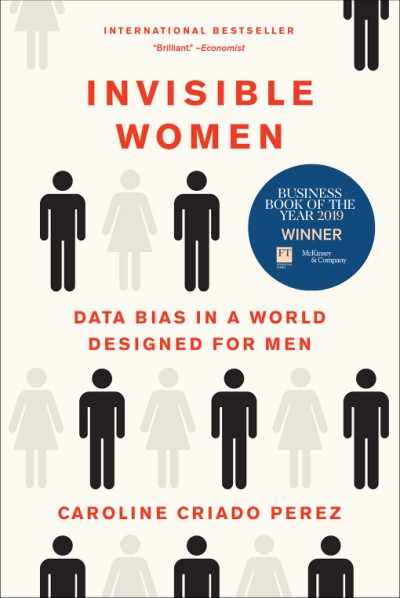Invisible Women
My daughter strongly recommended I read the bestselling book Invisible Women: Data Bias in a World Designed for Men, by Caroline Criado Perez. She helpfully loaned me her electronic copy, and I learned so much from it I bought my own copy. And in turn, I recommend it to you.

In its pages, the author argues that the gender gap is both a cause and a consequence of the type of unthinking that conceives of humanity as almost exclusively male. It was surprising to me (being exclusively male since birth), how widely and how often this bias crops up, and how it distorts the supposedly objective data that increasingly governs our lives.
She covers a lot of territory. The book’s six parts cover Daily Life, The Workplace, Design, Going to the Doctor, Public Life, and When it Goes Wrong; and includes such intriguing chapters as Can Snow-Clearing be Sexist, Gender Neutral With Urinals, and One-Size-Fits Men.
Of particular interest to park and recreation professionals is a section addressing city and park planning and use. She cites a 2016 article in The Guardian that asked why we aren’t designing places “that work for women, not just men” and cautions that the limited datasets that track and trend data on gender make it hard to develop programs and infrastructure that factor in and meet women’s needs.
For example, planners in Vienna found that the presence of girls in parks and public playgrounds decreased after the age of 10. They subsequently found, through collecting pertinent data, that single large open spaces were the problem, because they forced girls to compete with boys for space—who largely chose not to. But when the developers subdivided the parks into smaller areas, the female dropoff was reversed.
They also addressed the park’s sport facilities. “Originally these spaces were encased in wire fencing on all sides, with only a single entrance area—around which groups of boys would congregate. And the girls, unwilling to run the gauntlet, simply weren’t going in.” The simple solution? More and wider entrances. They also subdivided the open areas and sport courts. Formal sports like basketball were kept intact, but they also provided space for more informal activities, in which girls were more likely to engage.
In another example, Malmos, Sweden, discovered a similar male bias in the way they’d traditionally been planning urban recreation for youth. “The usual procedure was to create spaces for skating, climbing and painting graffiti. The trouble was, it wasn’t ‘youth’ as a whole that was participating… It was almost exclusively boys, with girls making up only 10-20 percent of those who used the city’s youth-directed leisure spaces and facilities.” So they began asking what the girls wanted—and the resultant new areas are well-lit and split into a range of different-sized spaces on different levels.
Such a gender-equitable approach doesn’t just benefit females alone, but extends to the economy. When sports funding goes mainly to organized sports, which is dominated by boys, that which was meant to benefit everyone equally, simply doesn’t. Sometimes girls’ sports aren’t provided for at all, which means girls must pay for them privately, or not participate at all. Such detrimental consequences then ripple into the present and future health of half the population, and the overall economy. One study concluded that a certain increase in the city’s support for girls’ sports could “lead to a 14 percent reduction in future fractures due to osteoporosis, and the investment will have paid for itself.”
Perez concludes that when planners, developers and programmers “fail to account for gender, public spaces become male spaces by default.” This is not a niche concern: “if public spaces are truly to be for everyone, we have to start accounting for the lives of the other half of the world.” It’s not just a matter of justice: it’s also a matter of personal health, welcoming placemaking, social equity, and simple economics. And it starts with collecting meaningful gender-sensitive data.

